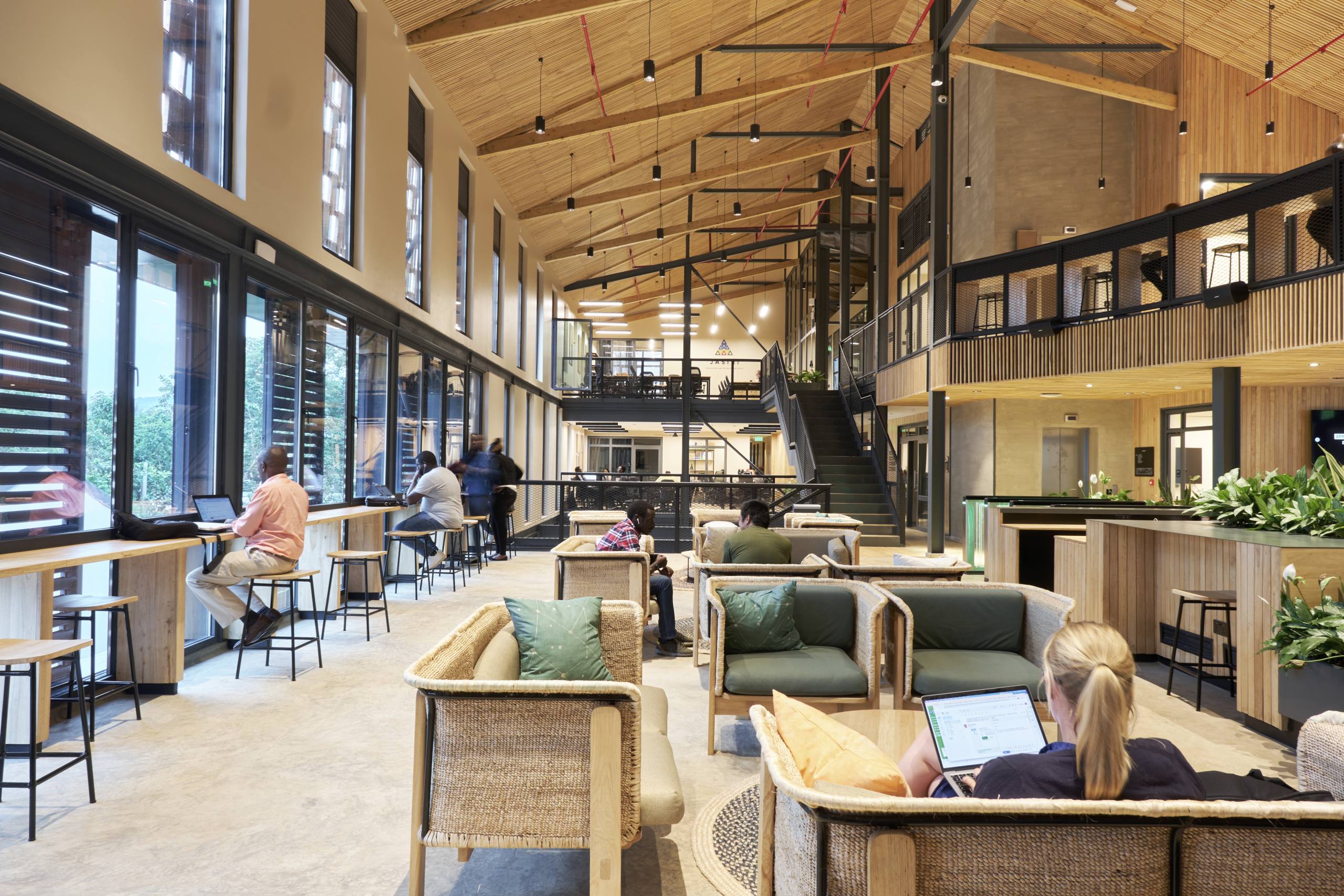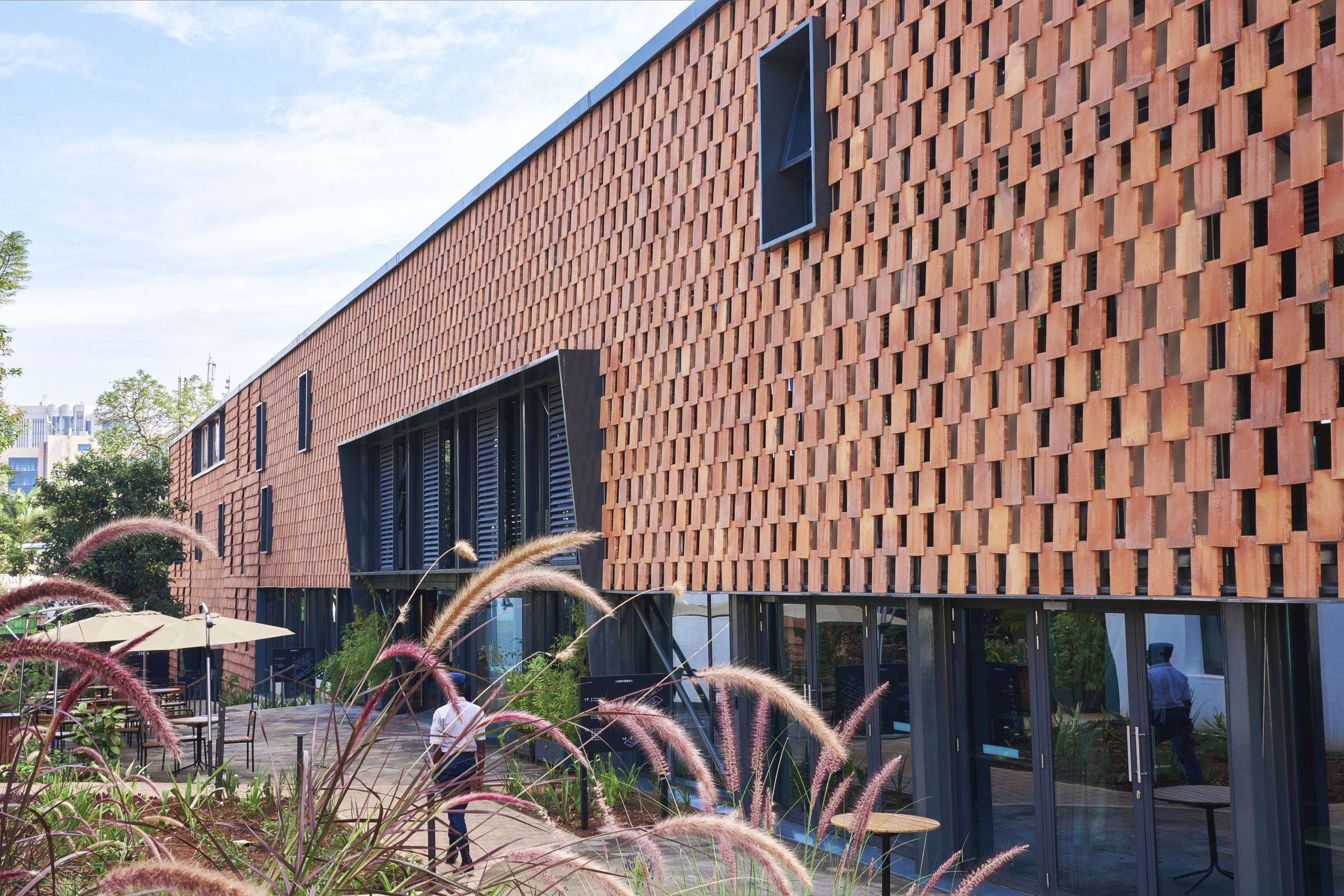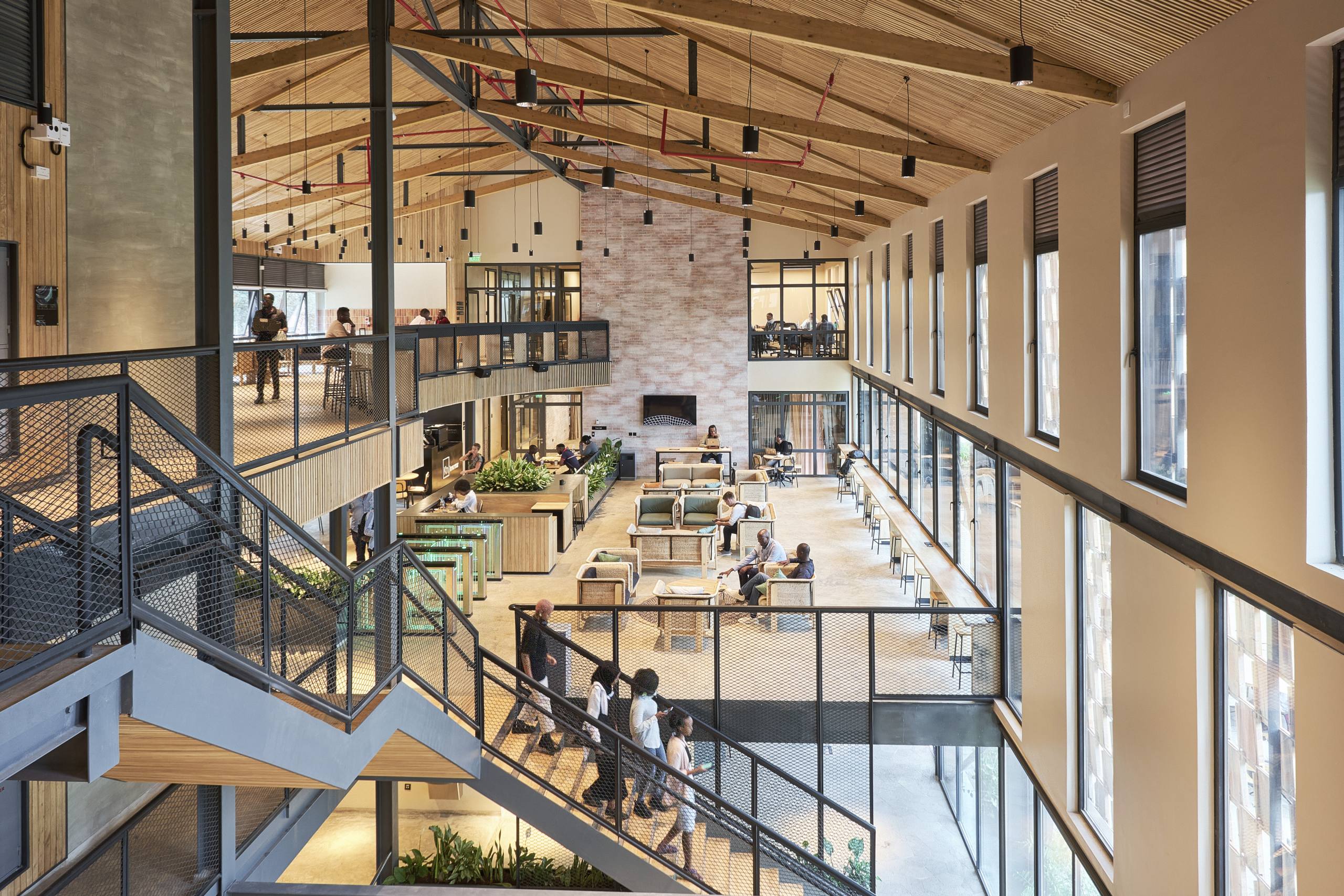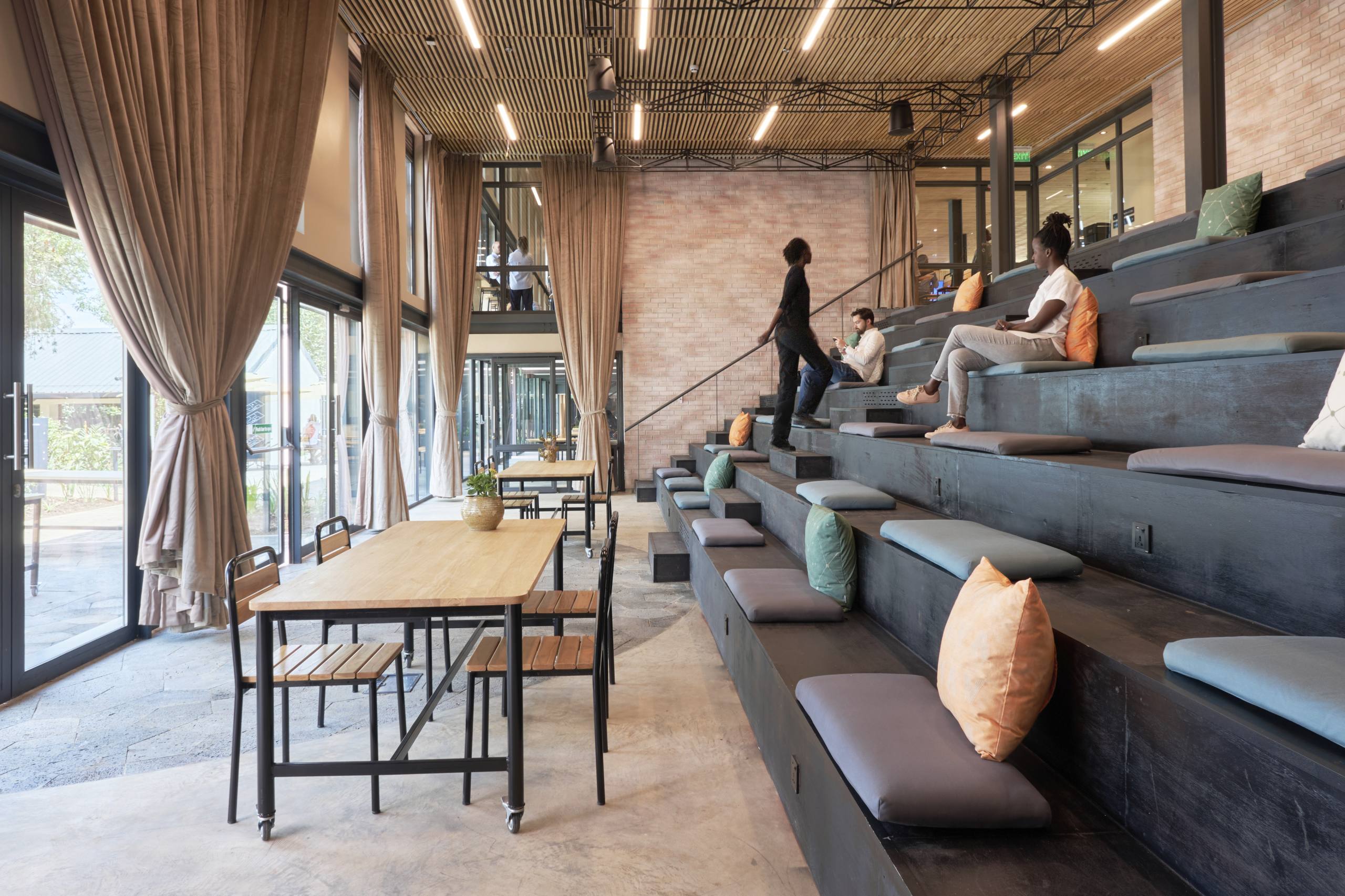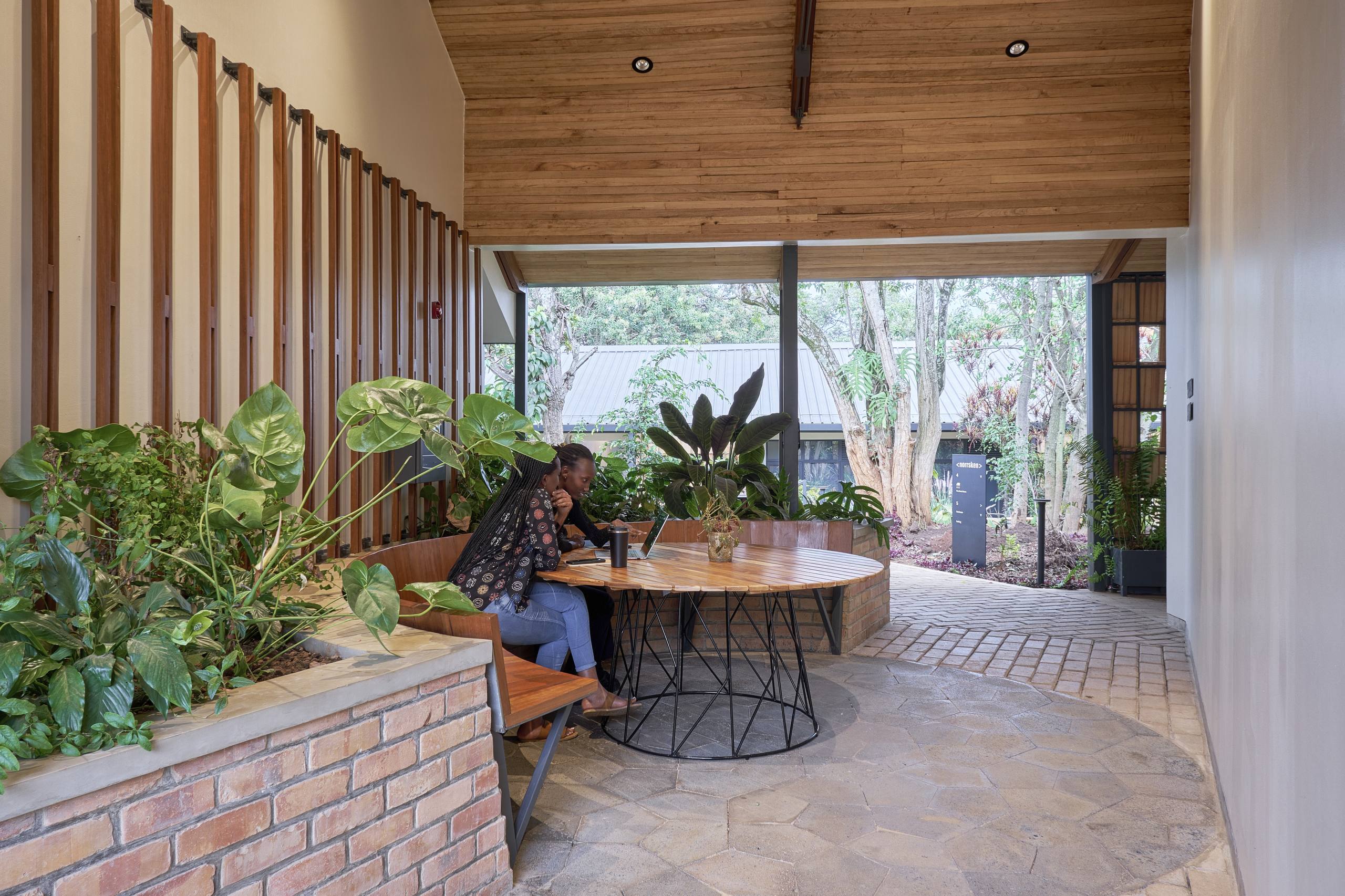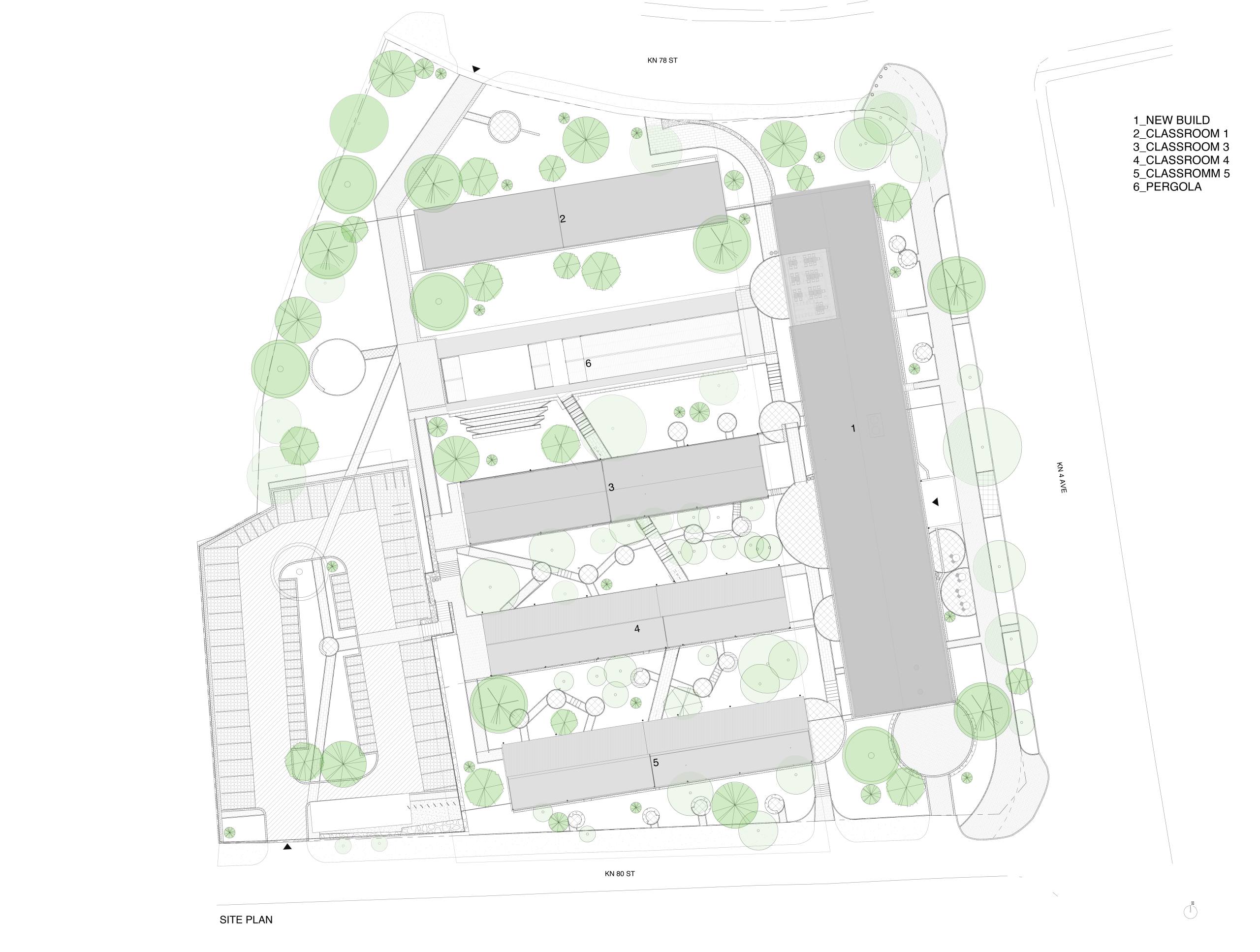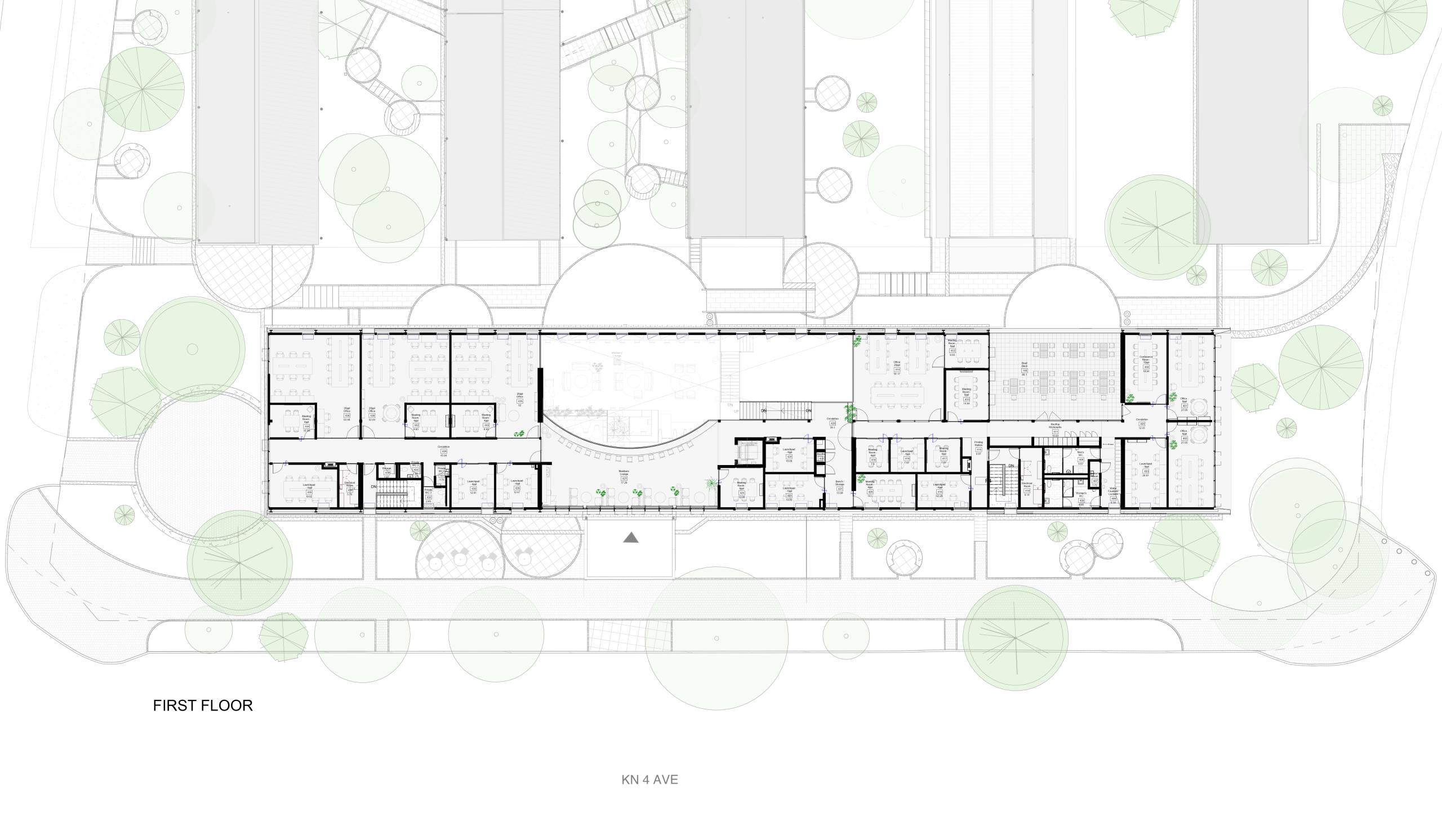Norrsken Kigali House/
MASS Design Group
Project Details

Location(City/Country):
Kigali, Nyarugenge District / Rwanda
Tipology:
Adaptive Reuse
Year (Design/Construction):
- / 2022
Area (Net/Gross):
- / 5090 m2
Operational Carbon emissions (B6) kgCO2e/m2/y:
-
Embodied Carbon emissions (A1-A3) kgCO2e/m2:
256- Clay-shaded facades and natural ventilation. It incorporates a thermal labyrinth, a pioneering sustainable cooling system, in the new building.
- Recycled as many existing materials on site as possible to reduce the project’s embodied carbon. Bricks from demolished building reused within the landscape for benches and wall features, and reused all the steel from the gym to build a pergola structure for outdoor events and dining or co-working.
- Adaptive reuse of existing classroom buildings, converting them into coworking spaces, extending their life by 50 years with seismic strengthening.
- Design of new buildings using a circular economy approach, with a lightweight, low-carbon steel and timber structure that can be unbolted and easily deconstructed in the future – allowing for future reuse.
- Photovoltaic solar panels added to roofs, maximizing energy independence.
- Water recycling. To conserve energy and water, all stormwater is managed on site or harvested for non-potable water services, including flushing toilets. After flushing, the water makes its way to the on-site wastewater treatment plant. Treated water flows into infiltration trenches below on-site gardens, where it seeps into the soil. This reduces the risk of harmful flash flooding effects on vulnerable communities located downstream.
East Africa boasts three of the world’s top ten fastest-growing economies, but faces major challenges in attracting foreign direct investment to accelerate the growth of small and growing businesses. In partnership with MASS, Norrsken seeks to address this by launching Norrsken Kigali House, an entrepreneurship hub in Kigali, Rwanda.
The new Kigali hub is housed on the historic École Belge site in central Kigali. The École Belge de Kigali, established in 1965, is one of the oldest international school facilities in Rwanda. With the historic classrooms and former school playgrounds at risk of being demolished for high-rise commercial use, MASS aimed to preserve the historic structure of the École Belge and illustrate how adaptive reuse could work within the neighborhood to create moments of green and public spaces.
While repurposing existing classroom blocks, the site also presented an opportunity to build a new frontage that is open, transparent, and engaging. The completed campus is comprised of four buildings and an outdoor pergola structure: three renovated École Belge classroom blocks and one newly constructed building, the main Norrsken House.
Across the site, new spaces for different scales and types of work, from large collaborative areas to quiet individual workspaces, in addition to landscaped and semi-public outdoor spaces were designed. Furniture and fittings tailored for each space were created by MASS’s furniture design studio. The landscape design, also led by MASS, fosters collaboration and networking opportunities beyond the building. Instead of demolition, MASS prioritized deconstruction and reuse of materials for site benches, feature walls, and pathways. The steel of the existing gym was entirely salvaged, and then reused to build the outdoor pergola event space.
The Norrsken Kigali House is a model of green building development and will be EDGE Advanced certified, meaning its buildings will have 40 percent or more on-site energy savings. For temperature control and ventilation, the design optimizes clay-shaded facades and natural ventilation, and incorporates a thermal labyrinth, a pioneering sustainable cooling system, to reduce energy demands. The building incorporates a thermal labyrinth cooling system in the basement. The system is powered by a low-energy fan, which takes air from a shaded exterior courtyard and circulates it slowly through the labyrinth. At night, the walls cool as air temperatures fall, so the cooler air is circulated through high-intensity areas—an auditorium, coworking spaces, and a lobby—as they warm during the day. Sensors that record temperature and carbon dioxide regulate the fan
In addition, a solar photovoltaic system covering the facility’s roof helps to maximize energy independence. To conserve energy and water, all stormwater is managed on site or harvested for non-potable water services, including flushing toilets. Combining these conservation measures, the campus design achieves a 32 percent embodied carbon reduction compared to the global average for similar office buildings.
The site offers a curated ecosystem that elevates the status and visibility of entrepreneurs while offering the tools and networks to help startups grow efficiently and become investment-ready. The design of the Norrsken Kigali House incorporates spaces for different scales and types of work, from large collaborative spaces to quiet individual workspaces, in addition to landscaped and semi-public outdoor spaces. The aim of Norrsken Kigali House is to fuel growth in East Africa, accelerating their rapid development of entrepreneurship by increasing access to international capital, ultimately shifting the paradigm from aid to investment.
Project Leads:
- David Saladik, Lead Architect, Principal in Charge
- Kelly Alvarez Doran, Pre-design & Engagement Lead, OAA, MRAIC
- Anton Larsen, Design Director and Project Manager, Int Assoc. AIA, RwGBO
Design Advisory:
- Michael Murphy, Int FRIBA
- Ashley Marsh, RA
- Kelly Alvarez Doran, OAA, MRAIC
- James Blackman
- Jean Paul Uzabakiriho, RA
Architecture & Implementation:
- Alex Dallas
- Nadia Perlepe
- Amani Rwibasira, RA
- Lamy Subira
- Emery Karenzi
Quantity Surveying:
- Martine Dushime
Landscape Architecture & Implementation:
- Sierra Bainbridge, RLA
- Therese Graf
- Taylor Sinclair
- George Orfanopoulos
Structural and Geotechnical Engineering:
- Rosie Goldrick, CEng MICE, CIER
- Cameron Bailey, CEng MIStructE, CIER
- James Kitchin, CEng MICE, EDGE Expert
- Harriet Kirk, CEng MICE, CIER, PROGEP
- Nelson Habintwari
- Zani Gichuki
Building Services, Solar, Fire and Environmental Engineering:
- Tilly Lenartowicz, MCIBSE
- Gilbert Hervé Ngenzi, CIER
- Jacques Maniraruta, CIER
- James Musoni
- Opoko Jonathan Okechi
Civil Engineering:
- Christian Uwinkindi, CIER
- Harriet Kirk, CEng MICE, CIER, PROGEP
- Paterne Niyonkuru
- Asyncrite Nyinganyiki
Interior Design, Furniture and Signage:
- Amie Shao
- Christelle Muhimpundu
- Amani Rwibasira, RA
- Niels Datema
- Miguel Roldán Signes
- Bob Stern
- Theophile Ndoreyaho
- Jean Claude Kwitonda
Photographer:
- Chris Schwagga
